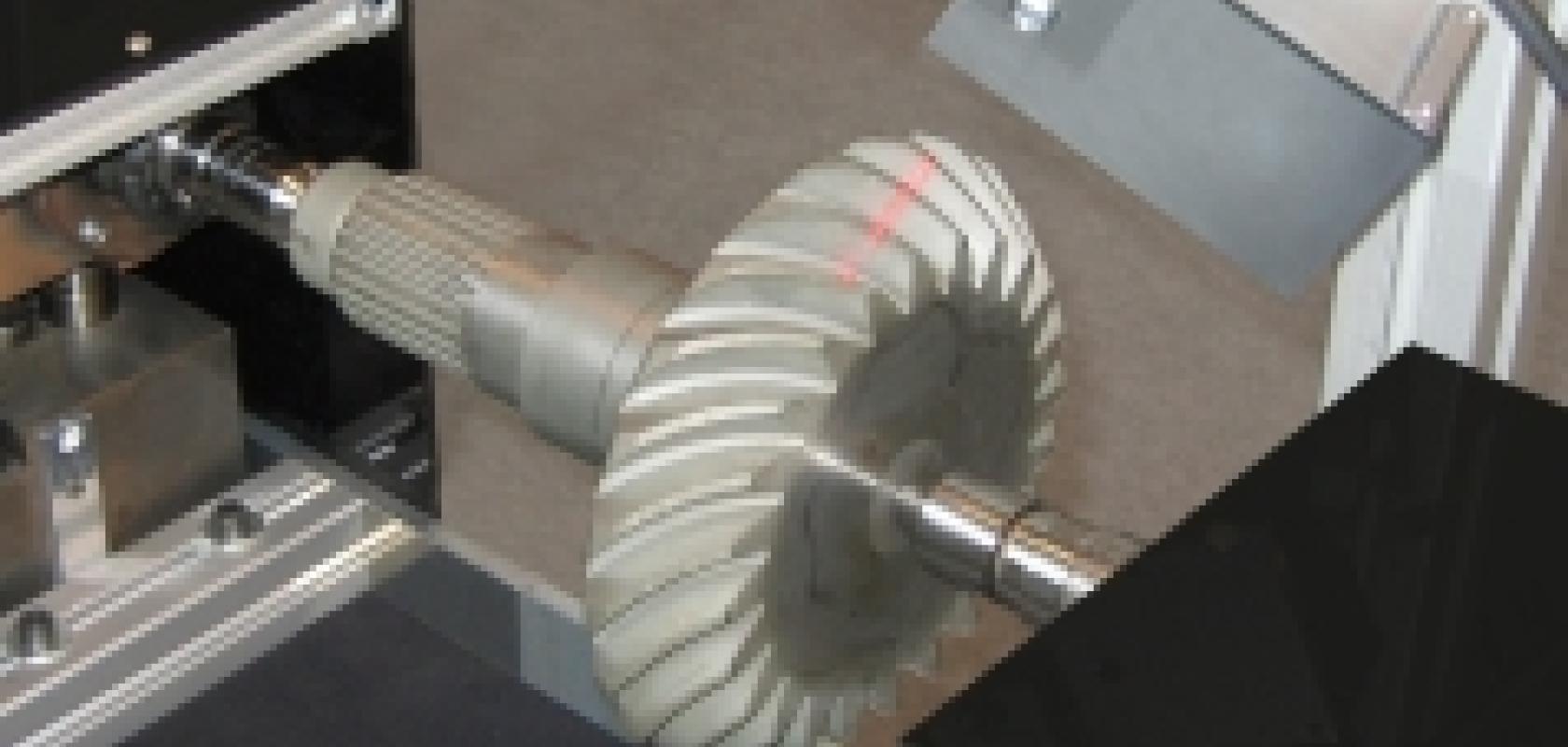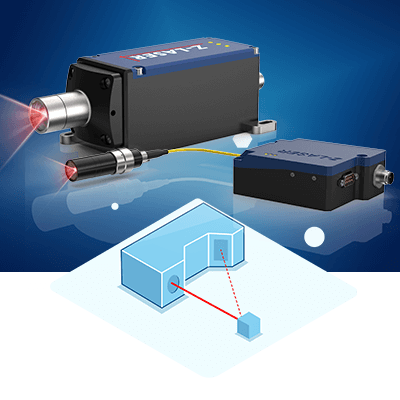Strengths of using optical measurement systems in multi-material inspection processes
The Duty of Optical Dimension Solutions ahead of time Width Techniques
Optical measurement systems have actually changed assessment, bringing a level of precision that was once unimaginable. You might be surprised to find out exactly how these innovations, based on fundamental concepts like reflection and interference, are applied across various sectors. Their non-contact capacities not just enhance precision yet likewise streamline procedures. As you check out even more, you'll discover just how these systems are shaping the future of dimension and quality assurance.
The Advancement of Assessment: A Historic Viewpoint
As you check out the history of width, you'll find that its advancement reflects mankind's quest for accuracy and standardization. From ancient human beings utilizing body components as units of dimension to the development of standard weights and actions, each step reveals our desire for precision. The Egyptians built the pyramids using accurate dimensions, while the Romans advanced design with their sophisticated measuring tools.
Throughout the Renaissance, scientific innovations moved the emphasis toward much more empirical techniques, leading the way for modern-day metrology. The introduction of the statistics system in the late 18th century noted a significant turning point, developing universal requirements. Throughout the 20th century, technical advancements even more changed width, allowing very accurate measurements in different areas.
Today, width remains to develop, incorporating electronic technology and automation. This history highlights not simply the value of measurement however additionally our ruthless pursuit of enhancing precision and uniformity in our significantly intricate globe.
Concepts of Optical Dimension Equipments
Recognizing the concepts behind optical dimension systems is crucial for accurate lead to metrology. You'll want to take into consideration fundamental optical principles, measurement precision factors, and effective system calibration techniques. Each of these elements plays a vital duty in guaranteeing your dimensions are dependable and accurate.
Fundamental Optical Principles
While exploring optical dimension systems, you'll come across basic optical principles that develop the backbone of exact information purchase. Light behaves in predictable means, and comprehending these habits-- like diffraction, reflection, and refraction-- is necessary for efficient measurements. You'll make use of lenses and mirrors to control light and focus it onto your target, ensuring accuracy in your readings. Additionally, the wave nature of light enables interference patterns, which can boost dimension resolution. Polarization can also play a vital function in distinguishing signal from noise, improving the quality of your results. By understanding these concepts, you'll be equipped to utilize optical technologies effectively, leading the way for improvements in metrology and guaranteeing your measurements are both trusted and repeatable.
Dimension Precision Factors
To accomplish high dimension precision in optical systems, numerous factors enter into play, influencing the dependability of your outcomes. The high quality of the optical elements matters substantially. High-quality lenses and detectors decrease aberrations and noise, guaranteeing your measurements are exact. Second, environmental conditions like temperature and humidity can impact measurements, so preserving a secure atmosphere is crucial. Third, the alignment of the optical system is crucial; even minor misalignments can result in considerable errors. Lastly, the wavelength of light utilized effects the resolution and accuracy of your measurements. By resolving these variables, you can boost the total efficiency of your optical measurement systems, resulting in even more accurate and dependable lead to your assessment applications.
System Calibration Techniques
Accomplishing high dimension accuracy is only part of the equation; correct system calibration methods are just as important in optical dimension systems. To guarantee your system provides dependable outcomes, you should consistently calibrate it utilizing basic recommendation products. Start by changing the optical parts, like lenses and mirrors, to reduce methodical mistakes. Next, use recognized dimensions to verify the system's output and make needed corrections. It's likewise crucial to make up environmental elements-- temperature level and moisture can influence measurements. Execute a routine calibration routine to keep uniformity over time. Finally, document all calibration procedures and results; this will certainly assist you track efficiency and resolve any kind of drift in accuracy. With these methods, you'll improve the dependability of your optical dimension system.
Trick Technologies Behind Optical Dimension
Optical measurement systems count on several key technologies that boost precision and effectiveness in assessment. One important technology is interferometry, which uses the disturbance of light waves to determine small displacements and surface area irregularities with extreme accuracy. You'll likewise locate laser scanning systems, which capture comprehensive 3D data of things swiftly, making them vital for dimensional evaluation.
Additionally, CCD and CMOS sensing units play a substantial function in converting light right into electric signals, permitting high-resolution imaging and specific dimensions. Advanced algorithms for photo processing better enhance measurement precision by evaluating information in genuine time, removing sound and enhancing features.
Ultimately, fiber optics provide adaptability and the capability to determine in difficult settings while maintaining signal honesty. By leveraging these modern technologies, you can attain superior lead to your metrology jobs, guaranteeing that your dimensions are both trustworthy and accurate.
Applications of Optical Measurement in Sector
As industries significantly demand precision and performance, the applications of optical measurement systems have become crucial throughout various markets. In manufacturing, these systems assist you check dimensions and tolerances in real-time, making sure quality control without time-consuming hand-operated checks. In the automotive market, optical dimensions aid in aligning elements with accuracy, boosting safety and security and performance.
In electronics, you're utilizing optical approaches to inspect minute functions on circuit card, detecting problems that could result in failings. The aerospace market advantages from non-destructive screening techniques, allowing you to evaluate materials and elements without jeopardizing their stability.
Optical dimension additionally plays a vital duty in fabrics, ensuring fabric my explanation dimensions meet precise requirements. optical measurement system. With their capability to supply high-resolution information swiftly, these systems equip you to make educated decisions, improve processes, and ultimately drive development across your sector
Enhancing Precision and Performance in Dimensions
When you believe regarding enhancing accuracy in dimensions, accuracy in your measurement techniques is important. By streamlining these procedures, you can attain quicker outcomes without sacrificing quality. Allow's discover exactly how adopting advanced optical dimension systems can raise both accuracy and performance in your work.
Accuracy in Measurement Techniques
Precision in dimension techniques is essential for accomplishing trusted results in width, specifically considering that little discrepancies can lead to significant errors. By making use of innovative optical dimension systems, you can boost the accuracy of your measurements. In addition, specific measurements permit you to keep high quality control, ensuring that products fulfill stringent specs.
Simplifying Measurement Procedures
To enhance precision and efficiency in dimensions, simplifying your dimension procedures is essential. Begin by embracing optical measurement why not try this out systems that offer real-time data, decreasing the time invested on hand-operated recording. These systems often incorporate flawlessly with existing software, permitting you to automate information collection and evaluation.
Following, standardize your measurement protocols. By carrying out constant treatments, you reduce irregularity and improve repeatability. Do not neglect to frequently adjust your tools to ensure its precision.

The Impact of Optical Measurement on R & D
As researchers venture to press the limits of development, optical dimension systems have come to be indispensable devices in the development procedure. These systems supply you with exact, real-time information that boosts your capability to evaluate complicated materials and frameworks. In different areas, from biotechnology to aerospace, you count on optical measurements to enhance layouts and enhance item performance.

With high-resolution imaging and non-contact methods, you can minimize example disruption, enabling more precise outcomes. This capability to record minute information accelerates your R&D cycle, letting you iterate designs rapidly and successfully. Moreover, optical measurement fosters cooperation throughout techniques, as the information created is usually easily interpretable and shareable.
Inevitably, incorporating optical dimension systems into your research not just increases performance but also deepens your understanding of the sensations you study. By leveraging these sophisticated strategies, you're his explanation much better equipped to introduce and stay in advance in an affordable landscape.
Future Fads in Optical Dimension Equipments
With the fast improvement of modern technology, you're most likely to see substantial shifts in optical dimension systems that will certainly redefine their application across various industries. You'll discover an approach raised automation and assimilation of expert system, permitting real-time information analysis and enhanced precision. Miniaturization is an additional trend; portable gadgets will make it possible for dimensions in tighter areas, making them ideal for fields like aerospace and biomedical applications.
Expect to see systems that can operate in difficult atmospheres, supplying trusted dimensions in severe problems. As these technologies converge, you'll locate that optical dimension systems not only boost accuracy yet additionally simplify operations, eventually driving innovation and effectiveness in your tasks.
Regularly Asked Concerns
Just How Do Optical Measurement Systems Contrast to Standard Dimension Techniques?
Optical dimension systems use greater precision and faster results compared to conventional techniques. You'll discover they catch even more information points accurately, reducing human mistake and boosting reliability, making them a recommended selection in various applications.
What Industries Advantage Many From Optical Dimension Equipments?
You'll locate markets such as aerospace, automotive, and electronic devices profit most from optical measurement systems. These sectors rely upon precise dimensions to ensure quality and performance, improving effectiveness and decreasing costs via innovative innovation.

Are Optical Measurement Equipments Expensive to Execute?
Optical dimension systems can be expensive to execute, but their precision and efficiency commonly validate the price. Purchasing such technology can lead to substantial long-term cost savings and enhancements in quality across different applications.
What Skills Are Required to Operate Optical Dimension Systems?
To operate optical measurement systems, you'll need strong analytical abilities, attention to information, and efficiency in software tools. Experience with optics and an understanding of measurement principles will also boost your efficiency and performance.
How Do Ecological Variables Influence Optical Measurements?
Environmental factors like humidity, temperature, and air quality can misshape optical dimensions. You'll observe variations in precision as a result of light interference or refraction. optical measurement systems. Keeping secure problems is essential for trusted and exact optical measurement results
Conclusion
In recap, optical dimension systems are revolutionizing width by giving unequaled accuracy and performance. By using advanced principles and technologies, these systems enhance accuracy while decreasing interruptions in different markets. As you discover future fads, you'll see how the assimilation of AI and automation will remain to raise measurement practices, driving development and enhancing top quality control. Accepting these advancements will certainly be essential for remaining competitive and accomplishing quality in your field.
Achieving high dimension accuracy is only component of the equation; proper system calibration strategies are similarly vital in optical dimension systems.When you believe about boosting accuracy in dimensions, precision in your measurement strategies is necessary. By using advanced optical dimension systems, you can enhance the precision of your measurements.To improve accuracy and performance in measurements, simplifying your measurement procedures is vital. Just How Do Optical Measurement Equipments Contrast to Standard Dimension Techniques?